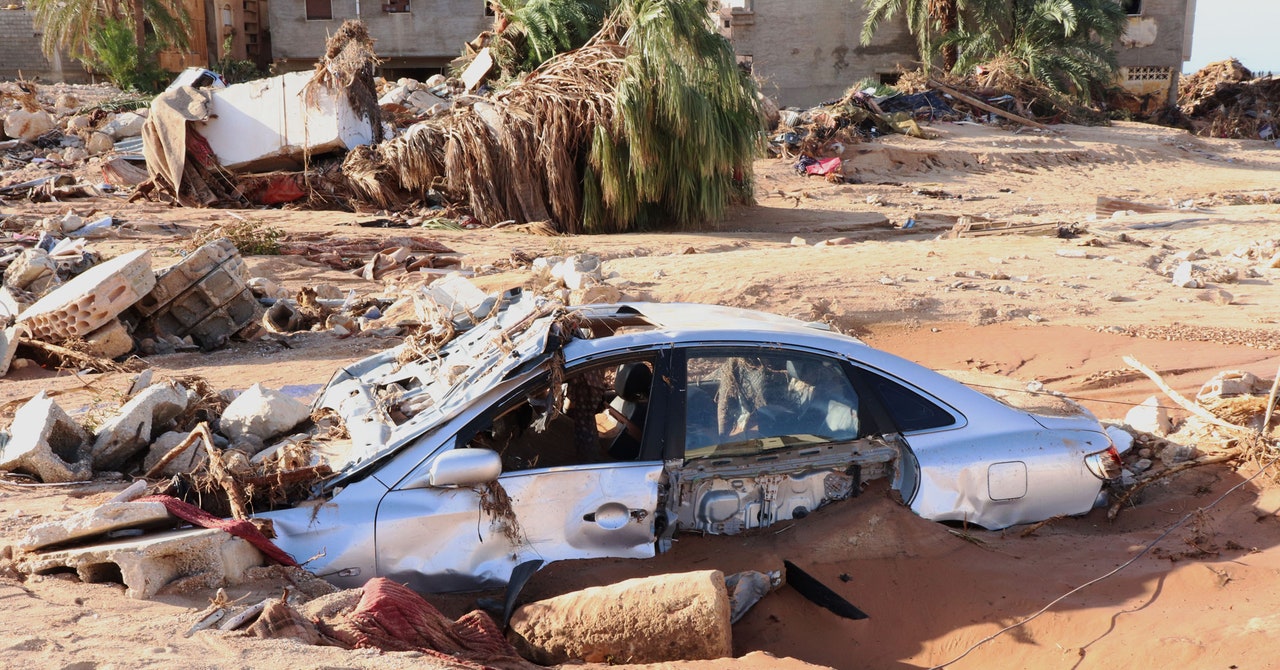
Storm Daniel, which has killed at least 5,000 people in Libya, with 10,000 more missing, was no normal weather. This rare, destructive, subtropical monster was supersized by unusually warm Mediterranean waters. When it slammed into the Libyan coast, it did so with such force that it caused two dams inland to collapse, releasing a tsunamic wall of water down the Wadi Derna river that destroyed much of the eastern city of Derna. This kind of storm—known as a “Mediterranean tropical-like cyclone,” or medicane—is rare. The climate crisis, counterintuitively, will make these storms rarer. But, when they do hit, they could be bigger than ever before.
Medicanes are the smaller siblings of the hurricanes and typhoons that barrage coastal locations around the world. As Hurricane Lee has shown over the Atlantic Ocean, warm water and humidity can quickly turn major storm systems into life-threatening monsters. And as the planet warms, more storms will get super big, super quick.
While medicanes are rare, their destructive power can be immense—especially when they hit countries ill-equipped to cope with such ferocious weather events. These storms rotate like regular hurricanes and have the same distinct “eye” feature. And, like hurricanes, they can cause significant damage when they make landfall.
Authorities are still struggling to get aid to Derna after Sunday night’s deluge washed away most access roads. Aid workers who managed to reach the city described utter devastation in its center, with thousands of people still missing and tens of thousands left homeless. “Bodies are everywhere, inside houses, in the streets, at sea. Wherever you go, you find dead men, women, and children,” Emad al-Falah, an aid worker from Benghazi, told the Associated Press on Wednesday, September 13. “Entire families were lost.”
The power of Storm Daniel was felt across the Mediterranean region. Before it landed in Libya, the system caused severe flooding in the Thessaly region of Greece, killing at least one person. Whole cities were submerged. The village of Portaria set a new national rainfall record of 884 millimeters (34.8 inches) before its weather station failed. Late last week, analysis of satellite data from the European Union’s Copernicus program revealed 180,000 flooded acres, with a loss of almost a quarter of the country’s crop production. Meteorologists have labeled it Greece’s worst storm since 1930. Additional casualties were reported in neighboring Turkey and Bulgaria.
The International Federation of Red Cross and Red Crescent Societies launched an emergency appeal for 10 million Swiss Francs ($11.17 million) to support the Libyan Red Crescent’s relief efforts in the North African country.
“Medicane events do not typically exhibit the full characteristics of true hurricanes, although, in rare instances, they can attain hurricane-level intensity,” says Azhar Ehsan, an associate research scientist at Columbia University’s International Research Institute for Climate and Society. Similar to hurricanes, changes in temperature and humidity across the Mediterranean Sea drive the creation of medicanes. Warm sea surface temperatures are the fuel for the more powerful medicanes that climate scientists say will be the new normal. But they’re not the only factors.

